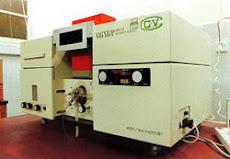Flame retardant mechanism of antimony trioxide
Antimony trioxide itself has no flame retardant function, however, when it is used together with halogenated compounds, the synergistic effect of the mixture creates the flame retardant properties.
Antimony trioxide reacts with halogenated compound and creates the chemical compounds, which generate the flame retardant function, through the following process.
1)Stop action of thermal de-composite chain reaction under gas phase (Radical trap effect)
2)Sealing action against oxygen under gas phase (Air sealing effect)
3)The formation of carbonaceous char under the solid phase (Air sealing and adiabatic effect)
The above reactions are considered to be as follow;

Examples of Antimony Trioxide Mixture Flame-Retarded Polymers
| Type of Polymers | Typical Data (phr) | UL-94(1.6mm) | LOI |
|
|
| V-0 | 30.4 |
|
|
| V-2 | 26.3 |
|
|
| V-0 | 26.4 |
|
|
| V-0 | 27.4 |
|
|
| V-0 | 33.3 |
|
|
| V-0 | 27.8 |
|
|
| | V-0 | 30.7 |
| PA | 100phr | DBDPO | 16 | Sb2O3 | 6 | | V-0 | |
| PA66 | 43.6phr | BPS | 20 | Sb2O3 MASTERBATCH | 6.0 | VetrotexEC104.5MM983 30 | V-0 | |
*Br content, including 50-70% TBA derivative and Oligomer type
Above data is an example of measurements, but are not standards or warranties of performance.
Flame Retardant are substances that can be chemically inserted into the polymer molecule or be physically blended in polymers after polymerization to suppress, reduce, delay or modify the propagation of a flame through a plastic materials. There are several classes of flame retardants; Non-halogenated / Halogen-FREE (Ammonium Polyphosphate, Melamine Polyphosphate etc) flame retardants , Halogenated Hydrocarbons ( Chlorine and Bromine containing compounds and reactive flame retardants ), Inorganic flame retardants ( Boron compounds, Antimony oxides, Aluminium Hydroxide, molybdenum compounds, zinc and magnesium oxides ), Phosphorous containing compounds ( Organic phosphate esters, phosphates, halogenated phosphorous compounds and inorganic phosphorus containing salts ).
 Non-halogenated Flame Retardant
Non-halogenated Flame Retardant
Non-halogenated Flame retardant not only enhances its non-halogen properties, it also has excellent properties like environmental friendly, lower smoke, excellent water-proof aging, aging stability, low migration, excellent processing property and attractive performance.A wide and versatile range of applications, applies to plastics, rubber as well as coating industry.
 Antimony Trioxide
Antimony Trioxide
Antimony trioxide is used mainly in fire-retardant formulations for plastics ( PVC resin, Vinyl resin and other resins compatible to DOP ), rubbers, textiles, paper and paints. It is also used as an additive in glass and ceramic products and as a catalyst in the chemical industry.
 Deca
Deca
Decabromodiphenyl Oxide, belongs to a family of polybrominated flame retardant, is used polyolefins, styrenics, polyamides and thermoplastic polyester resins. Its end applications include elastomers, wire & cable, textile coatings, electrical & electronic equipment, automotive parts, construction materials, texture backcoatings and textile blends.
 Magnesium Hydroxide
Magnesium Hydroxide
Magnesium Hydroxide is white powder, very slightly soluble in water; decomposing at 350 C. It occurs naturally as the mineral called brucite or is prepared by reacting magnesium sulphate or chloride with sodium hydroxide. It is used in the refining of sugar, in extraction of magnesium metal, in the processing of uranium, and in the sulfite wood pulp process. It is an inert filler, flame retardant and smoke suppressant for plastics, synthetic rubber, reinforced polyesters, phenolics, and urethane foam. Magnesium hydroxide releases its 31% water when heated to above 325 C, which cools the product below flash point to reduce fire occurance. Medicinally it, in the form of a mixture ( milk of magnesia ), is also used as an antacid and as a osmotic laxative.
 Zinc Borate
Zinc Borate
Zinc Borate is used as a flame retardant and smoke suppressant for a wide range of plastics, rubber, paper and textiles. It can replace antimony oxide as a synergist in plastics and rubber to enchance the activity of primary flame retardants by stepwise releasing the radicals. Is is also used in paints, adhesives, pigments and ceramic industries. It alos acts as an anti fungal agent and as a soil amendment to improve the vigor of plants.
For formulation guidelines, grades and application selection and further information, please contact us. samjiefu@gmail.com


 SL-2 Pellet ,Non-dusting ,Universal applications,Easy to handle, more economical ,Universal applications lower loading level, Not containing resin carrier, High content of bromine, Good thermal stability and flame retardancy, No dioxin problems.
SL-2 Pellet ,Non-dusting ,Universal applications,Easy to handle, more economical ,Universal applications lower loading level, Not containing resin carrier, High content of bromine, Good thermal stability and flame retardancy, No dioxin problems.






